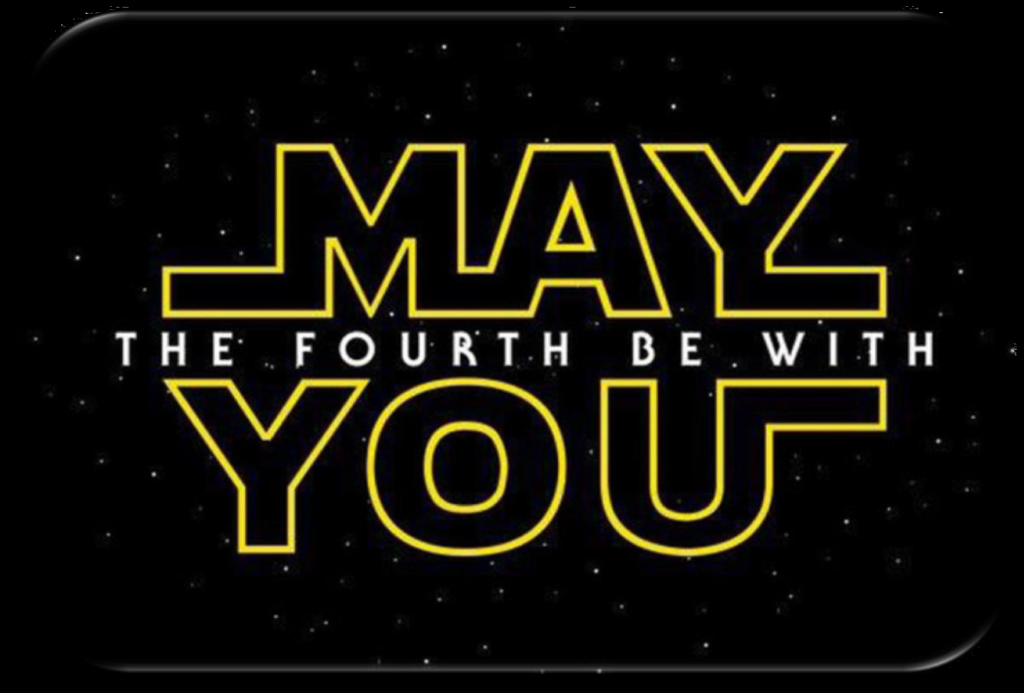It’s the 2nd of May. On “May the 4th” Star Wars fans worldwide celebrate “May the Force…” and we see all sorts of “May the 4th (Force)” memes pop up on our social media.

When the film first came out, some Christians made much of “the Force” and used it as an allegory of the Gospel or the Holy Spirit. The Bible Society put out some bible studies on it. Much the same occurred during the Matrix films trilogy and other movie franchises. Many of them are redolent with biblical allusions and the Matrix admittedly so. One of the main characters is called Trinity; Neo travels on a space ship called the Nebuchadnessar; and people live in Zion, etc. A modern Pilgrim’s Progress perhaps.
This got me to thinking about metaphors.
Metaphors are not literal but a thing explained in terms of another thing, to convey a deeper meaning. The power of story is well known and unique to humans and some social scientists say metaphor is primal to us. In many ways Story and Metaphor better explain many modern—and confusing—abstract concepts and complexities: “flatten the curve;” “in our bubble;” “social distancing;” “lock down;” “Level 4” “riding out the virus.”
The ultimate story teller Jesus did this all the time. In fact he ONLY conveyed the deeper meanings of the kingdom of heaven to his Jewish audience as parables. He chose local idiom in first century agricultural Isreal: ploughing, sowing, weeds, seeds, grain, fig trees, fields, fishing, chaff, boats, vines, wine, water, grapes and bread.
Jesus called Herod “that fox;” Thomas was known as Didymus; others were white-washed tombs full of bones; a dripping tap; a good soldier. John the Baptist called the Pharisees a “nest of vipers.” The Church is a bride. Similes galore like a flock of sparrows. The power of Story to convey deeper meaning.
Our hymns, prayers and our Bible are full of them. Thankfully God does not communicate with us in terms of graphs, algorithms or wads of textual narrative; but more often in parable, metaphor, simile, allegory, and allusion. He does this because I think it’s how we are “wired.” Think of the cave paintings of Lascaux, or the sculptural reliefs of Gobekli Tepe. And of course, people have only generally been literate in recent times, so Metaphor and Story makes obvious sense.
So does song and poetry, which our Bible is full of: the Song of Solomon; the Song of Deborah; the Psalms; Lamentations. It’s the language of the Church.
Why is this? Perhaps Christian writer John Eldredge in “Epic,” and Professor Tolkien put it best…
“When we were born, we were born into the midst of a great story before the dawn of time. A story of adventure, of risk and loss, heroism…and betrayal. A story where good is warring against evil, danger lurks around every corner, and glorious deeds wait to be done. Think of all those stories you’ve ever loved –there’s a reason they stirred your heart. They’ve been trying to tell you about the true Epic ever since you were young.”
Tolkien said,
“We have come from God, and inevitably the myths woven by us, though they contain error, will also reflect a splintered fragment of the true light, the eternal truth, that is with God. Indeed, only by myth-making, only by becoming a ‘sub-creator’ and inventing stories, can Man (sic) aspire to the state of perfection that he knew before the Fall. Our myths may be misguided, but they steer however shakily towards the true harbour.”
We are all wrapped within an eternal story. Our individual lives on earth just a chapter. Let’s turn the pages together.
John Stringer
I was talking about Heritage during one of my recent Saturday devotions, so I thought you might enjoy this…

